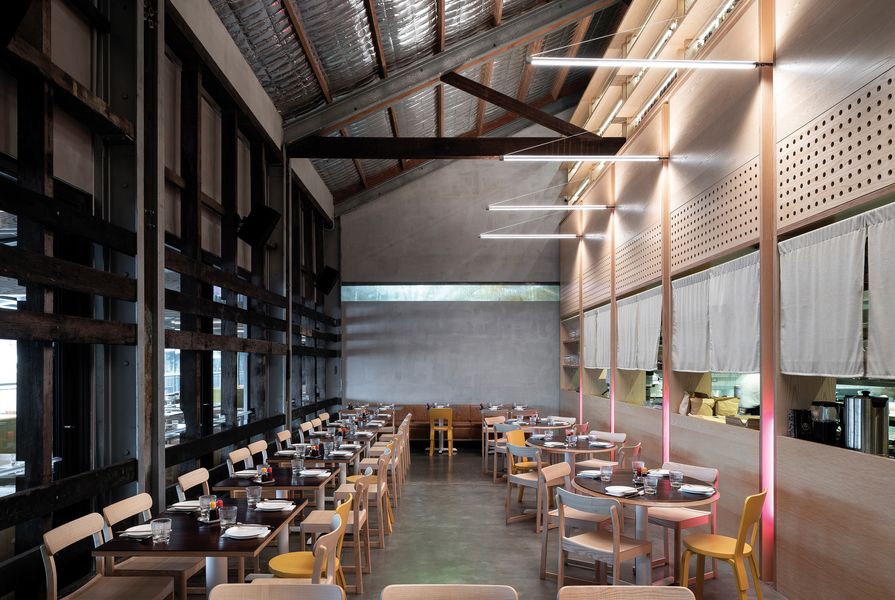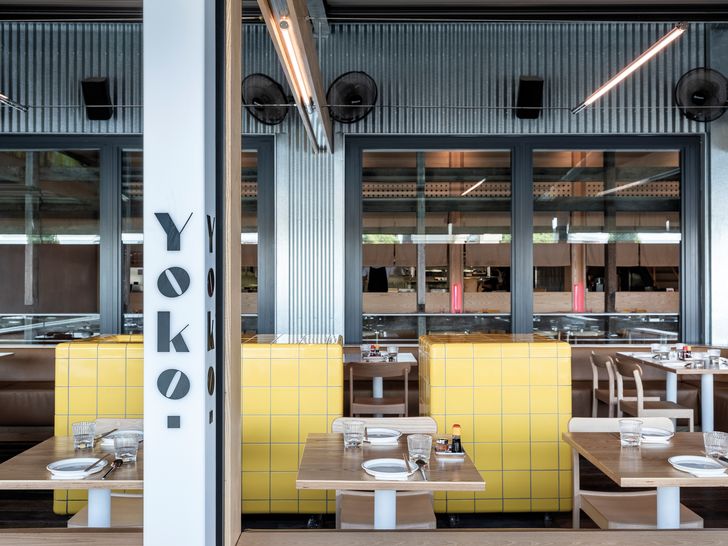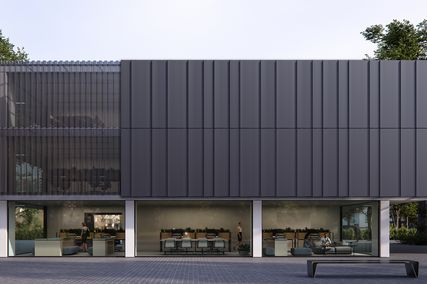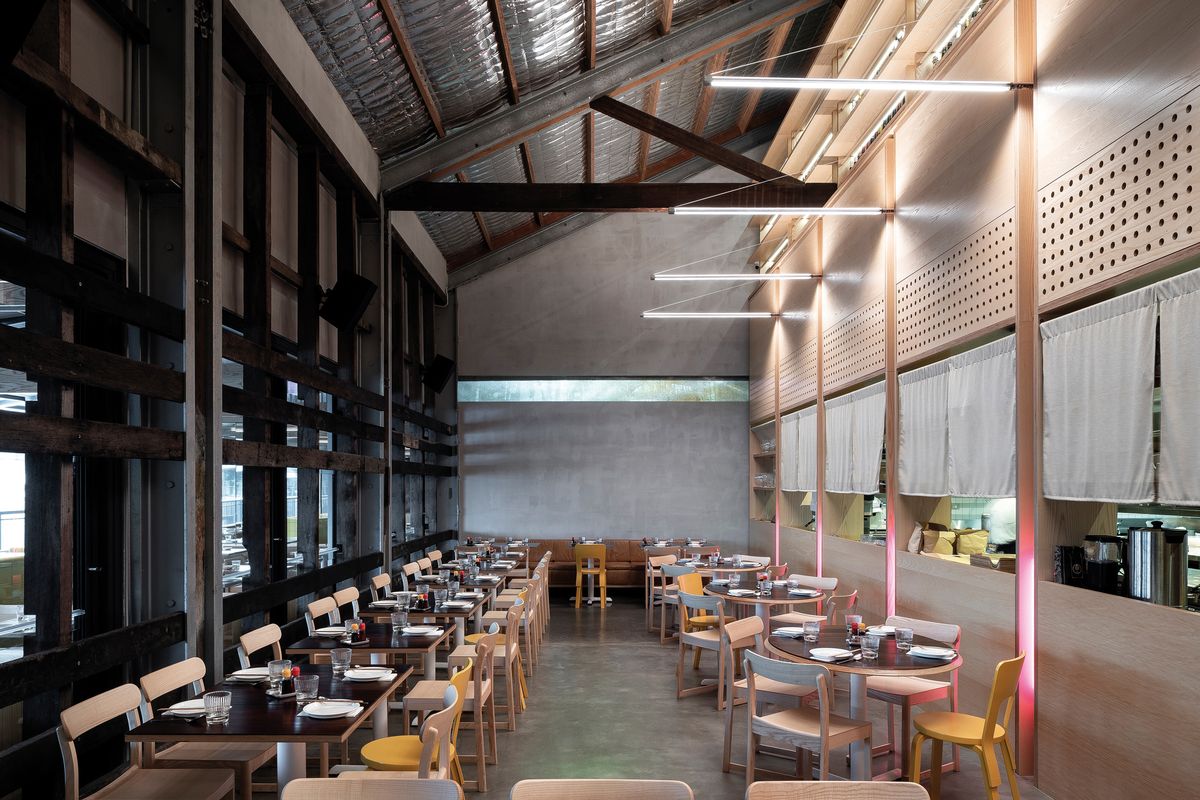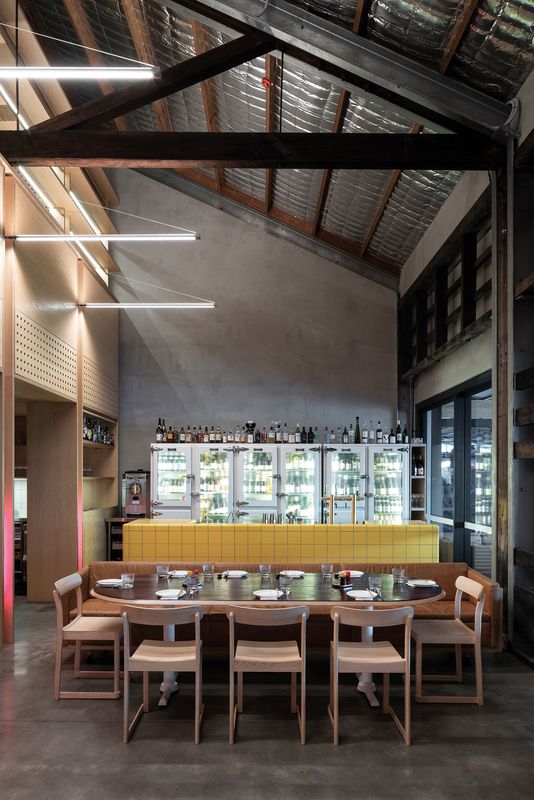Brisbane’s iconic Howard Smith Wharves precinct is one of the city’s most competitive strips for hospitality. Set amongst the riverside, offering killer views and a vibrant energy fuelled by a continuous flow of patrons, the precinct offers a prime location that requires clever design thinking to create an enticing and memorable dining experience. Yoko – George Livissianis’s second venture at the wharves with long-time friend and client Jonathan Barthelmess – does exactly this.
Howard Smith Wharves has a prominent maritime history in Brisbane. The shed that is home to Yoko was built underneath and alongside the construction of the Story Bridge in the 1930s. The building has a troubled past, withstanding World War II, and the Brisbane floods of 1974 and 2011. From 1960, the space remained mostly vacant until the revitalization and reopening of the wharves in 2018. Although robust, the site presented familiar characteristics of any heritage building – warped timbers, dubious structural integrity and a requirement to meet current building standards. Familiar with this process, Livissianis used as much of the existing space as possible. “Covering up the existing would remove all its history,” says Livissianis, and this would ultimately go against the Howard Smith Wharves vision for adaptive reuse of the site. “You will always wrestle with the existing, it is always challenging but it’s part of the problem solving.”
Playful pops of colour and light add a sense of Harajuku to the Japanese restaurant.
Image: Tom Ferguson
With the nature of the original building in mind, Livissianis centralized all kitchen and back-of-house areas, collecting them in what he describes as a “bento box.” As well as being a playful nod to the food culture of Japan, the bento box idea allowed new elements and spaces to slot neatly into the original grid and shell. This approach separated old and new, removing the possibility for fussy detailing required to accommodate aged materials and building elements. Positioned towards the back of the tenancy, the soft light timbers of the crafted box sit parallel to the rough dark timbers of the original building. The visual contrast lets the history be present in a contemporary space; reminiscent of the urban context in the cities of Japan.
Along with the heritage nature of the building, the journey to Yoko is not typical. Visitors arriving from the Howard Smith Wharves drop off zone must travel around the building, past competing restaurants and crowds before reaching the entrance. The outdoor dining space is Yoko’s front door, making that area and Yoko’s external signage critical in establishing the restaurant’s presence at the wharves. To tackle this, in true Livissianis style, the material palette of the outdoor dining space is minimal yet warm and overlayed with playful pops of colour and light. The yellow tiled wait stations amongst the timbers and leathers of the outdoor seating create moments of intrigue that catch the eye of passers-by. Yoko’s chic, simple and repetitive lightbox signage along the pedestrian path are suggestive of street signage found in the laneways of Harajuku. These two elements combined create a presence along the wharf that is apparent yet understated.
The outdoor dining space is Yoko’s front door, establishing the restaurant’s presence at the wharves.
Image: Tom Ferguson
Entering the interior space of Yoko, the eye is focused on the effortlessly simple wine display which is framed by linear detailing of the timber “bento box.” The linear language is carried throughout the internal space in a layout that responds to the existing grid format. Recessed moments in this grid are washed with pink neon light that carry the eye upwards, emphasizing the expansive volume of the space. Video projections of Shibuya Crossing on an exposed steel beam “bring animation and movement into the dining room” says Livissianis, as well as a small insight of life in Japan. Linen curtains are a simple addition, providing privacy to the kitchen areas beyond and a reference to characteristics of an izakaya. From the lower level, visitors glimpse numerous shelved bottles at the top of the soft timber, encouraging the curious to trail upstairs – through a dimly lit staircase – to which they stumble across a mezzanine bar and dining space decorated with Japanese sake, whisky and spirits – reminiscent of the treasures you find within the Golden Gai.
Livissianis continues to deliver interiors that identify strongly with their brand. At Yoko, the thoroughly considered and effective weaving of old, new, minimal and eccentric touches on the spirit of Japan and ultimately adds to the food experience of the restaurant. Yoko’s interiors provoke daydreams and memories of travels to Japan – a welcomed distraction while many international flights remain grounded.
Products and materials
- Walls and ceilings
- American ash-faced plywood. Grey stucco to side walls of original shed.
- Doors
- American ash-faced plywood.
- Flooring
- Burnished concrete slab on ground floor. Cork tile on first floor.
- Lighting
- Viabizzuno Bacchetta Magica warm white and RGB in clear acrylic housing.
- Furniture
- Artek Atelier chairs in ash finish. American ash-faced ply and cambia ash-faced ply dining tables.
- Other
- Tiles in ‘Dandelion’ from D-Tile on bar. Marblo Opal surface. Nevada leather upholstery from Pelle Leathers.
Credits
- Project
- Yoko Dining
- Design practice
- George Livissianis Interior/Architecture Studio
Surry Hills, Sydney, NSW, Australia
- Project Team
- George Livissianis, Lucy Kluver
- Consultants
-
Builder
Tonic Projects
- Site Details
- Project Details
-
Status
Built
Design, documentation 3 months
Construction 3 months
Category Hospitality
Type Bars, Restaurants
Source
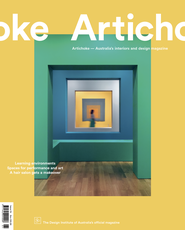
Project
Published online: 8 Sep 2021
Words:
Georgia Birks
Images:
Tom Ferguson
Issue
Artichoke, March 2021

